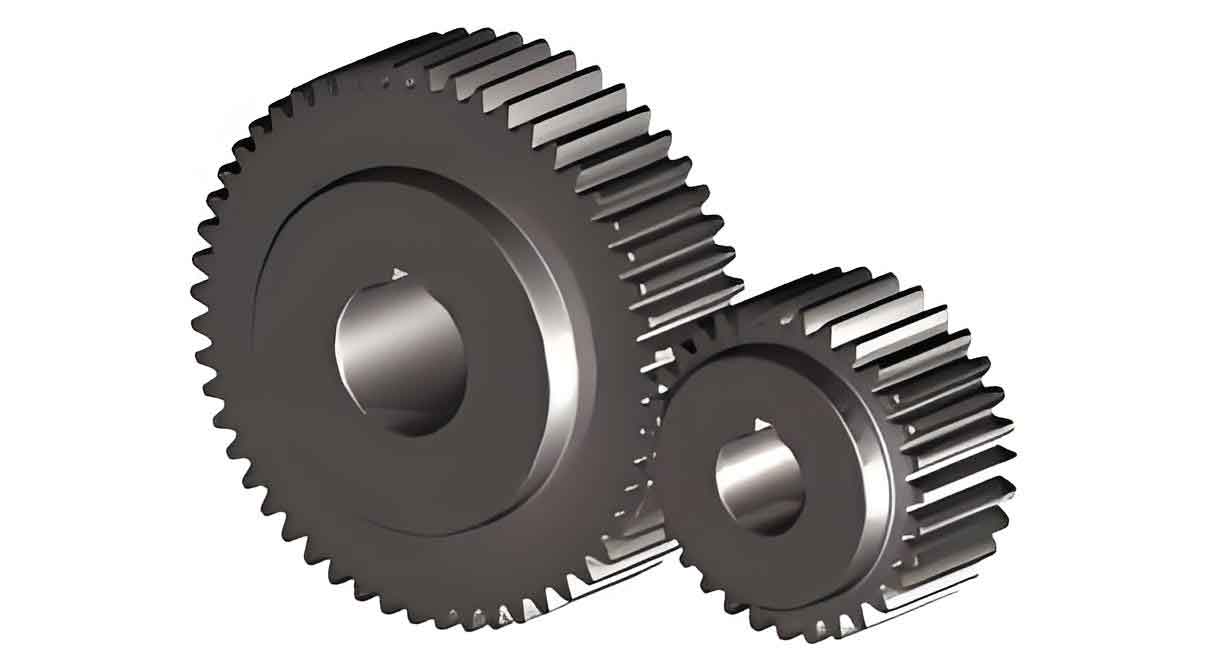Abstract
Spur gear is crucial transmission components in the automobile and machinery industries. With the advancement of precision plastic forming technology, more spur gear are being manufactured through near-net-shape processes. This paper focuses on the key technologies of a novel continuous “cold extrusion + cold finishing” composite forming process for spur gear used in heavy-duty vehicle axle reducers.

1. Introduction
1.1 Research Background and Significance
The demand for spur gear is significant in the market. Traditionally, gear is manufactured by cutting processes, which result in low material utilization and high production costs. Precision plastic forming, especially cold extrusion, offers advantages such as high material utilization, good surface quality, and excellent mechanical properties. However, the application of cold extrusion to large-modulus, wide-tooth spur gear has been limited due to challenges in mold manufacturing precision, forming loads, mold wear, and gear accuracy.
1.2 Research Status of Precision Plastic Forming Processes for Spur Gear
- Hot Precision Forging and Composite Forming
- Advantages: Good formability, suitable for large-scale production.
- Disadvantages: Low precision of final product, need for subsequent processing.
- Warm Precision Forging and Composite Forming
- Improved precision compared to hot forging.
- Limited application due to complex process control and mold design.
- Cold Precision Forging and Composite Forming
- High material utilization and surface quality.
- Challenges in mold precision and forming loads.
- Cold Extrusion and Composite Forming
- Emerging technology with high potential.
- Need for further research on process optimization and mold design.
Table 1: Comparison of Different Precision Forming Processes for Spur Gear
| Process Type | Advantages | Disadvantages |
|---|---|---|
| Hot Precision Forging | Good formability, suitable for large-scale production | Low precision of final product, need for subsequent processing |
| Warm Precision Forging | Improved precision, better material utilization | Complex process control, mold design challenges |
| Cold Precision Forging | High material utilization, good surface quality | High forming loads, mold wear, limited to small gears |
| Cold Extrusion | High precision, good surface quality, high efficiency | Challenges in mold precision, forming loads |
2. Research Objectives and Contributions
This research aims to address the issues of poor forming quality and low accuracy in the cold extrusion of spur gear for heavy-duty vehicle axle reducers. The contributions include:
- Proposing a novel continuous “cold extrusion + cold finishing” composite forming process.
- Conducting a systematic study on multi-objective optimization of cold extrusion process parameters.
- Analyzing the effects of cold finishing methods and amounts on forming accuracy.
- Designing and optimizing the combined die for cold extrusion.
3. Methodology
3.1 Numerical Simulation and Experimental Design
Numerical simulation using elastoplastic finite element software was employed to model the composite forming process. The simulation results were validated through experimental tests.
3.2 Multi-Objective Optimization of Cold Extrusion Process Parameters
The response surface methodology (RSM) was used to optimize process parameters such as die temperature, extrusion speed, and lubrication conditions. The optimization objectives were forming quality and forming load.
Table 2: Optimized Cold Extrusion Process Parameters
| Parameter | Optimized Value |
|---|---|
| Die Temperature | XXX °C |
| Extrusion Speed | XXX mm/s |
| Lubrication Conditions | YYY |
3.3 Analysis of Cold Finishing Methods and Amounts
Different cold finishing methods and amounts were studied to determine their impact on gear accuracy. The optimal finishing method and amount were determined based on experimental results.
3.4 Optimization of Combined Die Design
The Kriging model and particle swarm optimization (PSO) algorithm were used to optimize the structural parameters of the combined die. The optimized die design significantly reduced overall size and increased mold life.
Table 3: Optimized Combined Die Parameters
| Parameter | Optimized Value |
|---|---|
| Diameter Ratio | ZZZ |
| Interference Fit | AAA |
4. Experimental Results and Analysis
4.1 Gear Dimensions and Accuracy
The dimensions of the spur gear produced by the composite forming process were measured. The minimum diameters of the top of the upper and lower teeth were 74.40mm and 73.86mm, respectively, meeting subsequent machining requirements. Spur gear accuracy was tested, with the maximum tooth profile deviation being 12.2μm (GB/T10095 grade 6) and the maximum helix deviation being 26.6μm (GB/T10095 grade 8).
4.2 Mold Life and Microstructure
The mold life was approximately 150,000 pieces, unchanged compared to the traditional design. Microstructural observations confirmed good material flow and deformation during the forming process.
5. Conclusion and Future Work
5.1 Main Conclusions
- The novel continuous “cold extrusion + cold finishing” composite forming process significantly improved spur gear forming quality and accuracy.
- Multi-objective optimization of cold extrusion process parameters was effective in reducing forming loads and improving forming quality.
- The optimized combined die design reduced overall size and increased mold life.
5.2 Future Research Directions
- Investigate methods to avoid lubrication layer failure and improve lubrication during cold extrusion of large-modulus spur gears.
- Study the microstructure evolution during the composite forming process to further optimize material properties and forming conditions.
